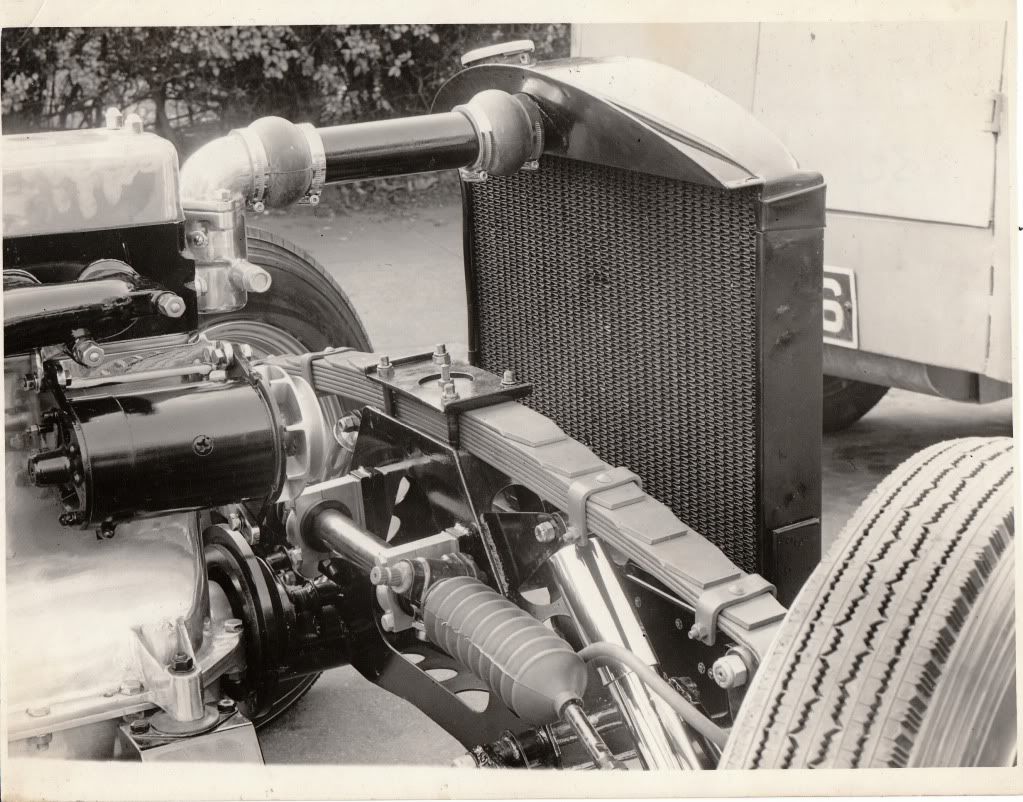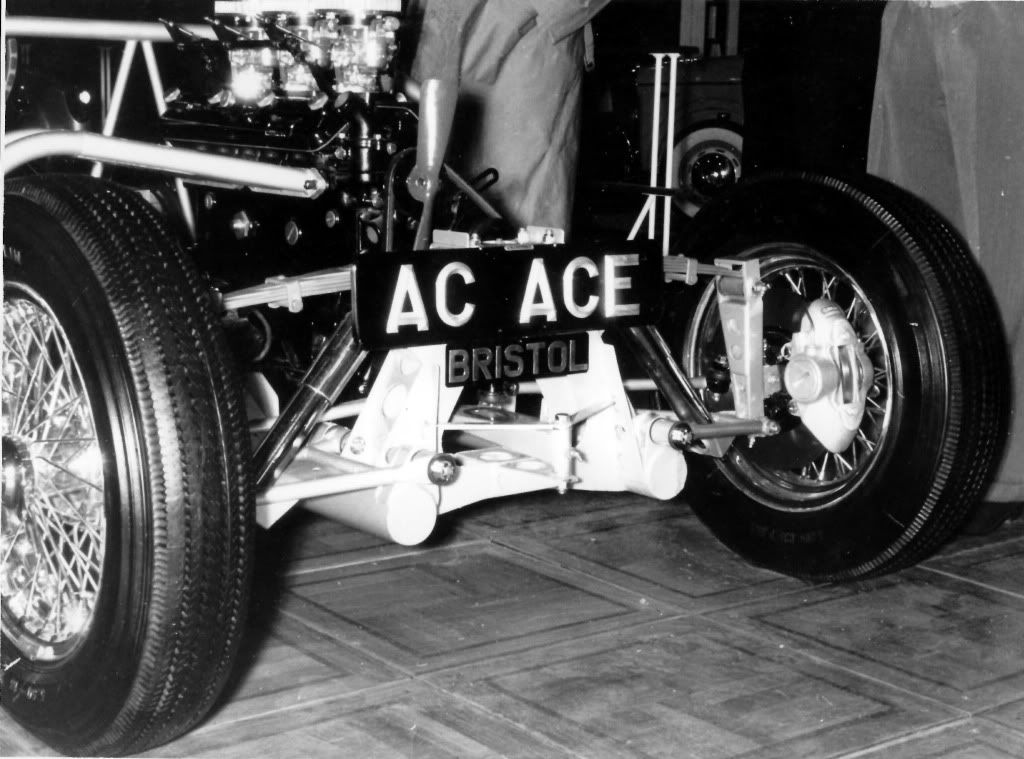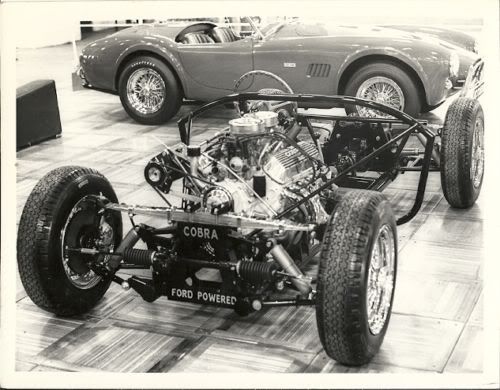quote:
Originally posted by Aceca289One question I have is why AC designers chose to place the rack in front of the suspension tower in the Cobra rather than aft of the tower as Tojeiro had placed it in the ACE prototype?
Not being party to the design process at the time, in order to answer some of Aceca 289's questions I can only present and analise period evidence to hand.
The first photograph below is from AC Cars. Taken outside the factory, it was attributed to The Light Car magazine. The photo is otherwise unreferenced but is almost certainly the 1953 AC Ace show chassis and clearly has rack and pinion steering.
A number of design details are evident:
a. With the selected steering rack (from a Morris Minor?), the steering column would have to pass through the chassis to reach a front-mounted rack;
b. The rear-mounted rack allows the then necessarily tall radiator to be mounted as far back as possible, with benefits to the styling;
c. The rear-mounted rack is linked to rear-facing steering arms;

The second photo below is of the 1957 AC Ace-Bristol show chassis fitted with cam and peg steering and disc brakes. Further design details evident are:
a. As with the drum-braked show chassis, the steering arms are rearward facing;
b. The disc brake calipers are 'leading' and so do not foul the steering arms;

The third photo below shows a leaf-spring rack & pinion AC Cobra show chassis (probably 1963). Design details include:
a. Front-mounted rack, of a configuration which allows the steering column to pass the chassis;
b. Forward facing steering arms;
c.'Trailing' disc brake calipers.

Conclusions:
a. It was probably not feasible to have forward facing steering arms and 'leading' disc brake calipers. Likewise rearward facing steering arms and 'trailing' calipers;
b. A rear mounted rack required rear-facing steering arms, and a forward mounted rack required forward facing steering arms;
c. The simplest conversion of an Ace from cam and peg to rack and pinion would be to have a rear mounted rack connected to the existing rear-facing steering arms. Otherwise new or heavily modified uprights with forward facing steering arms and, where disc brakes are fitted, 'trailing' brake calipers, would be required.
d. A rear-mounted rack conversion would be the closest option to the original Tojeiro concept (photo 1);
e. AC Cars reasoning for having a forward mounted rack on the leaf-spring AC Cobra is not clear from this.
Questions Arising
a. Can anyone add a photo of an early Cobra cam and peg car?
b.Is there an engineering advantage for 'trailing' brake calipers, which would have forced the designer's hand on the Cobra R&P design?
c. What front upright/steering arm/brake caliper configuration is fitted to 'Aceca 289'?
Hope this helps answer some of Aceca 289's questions